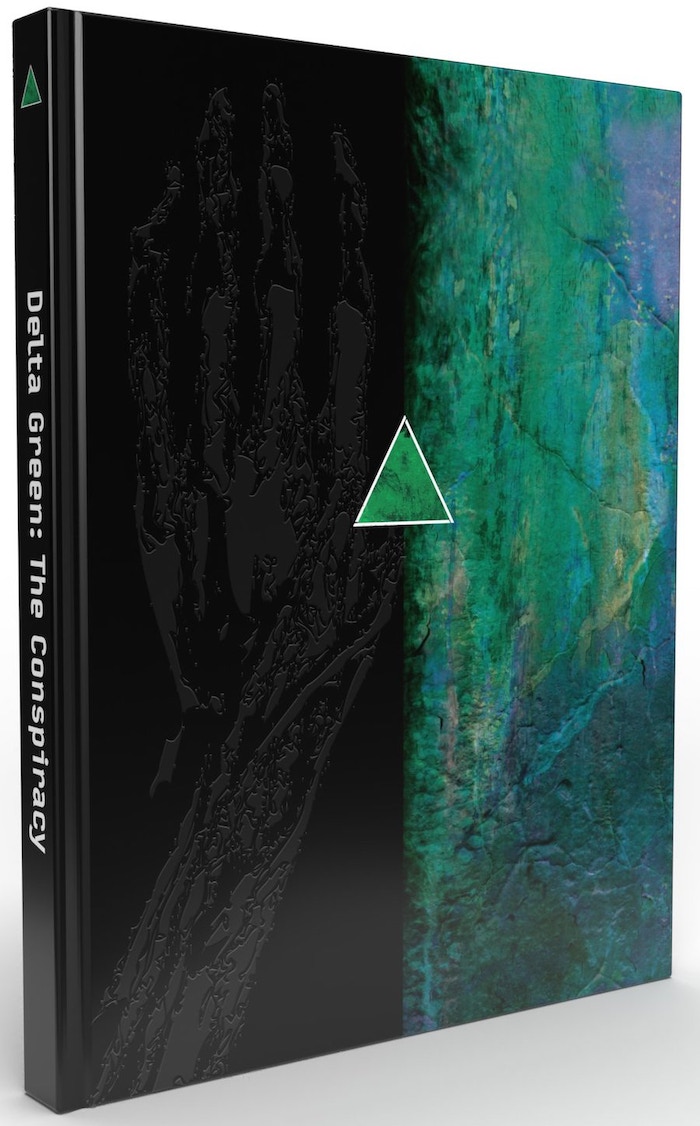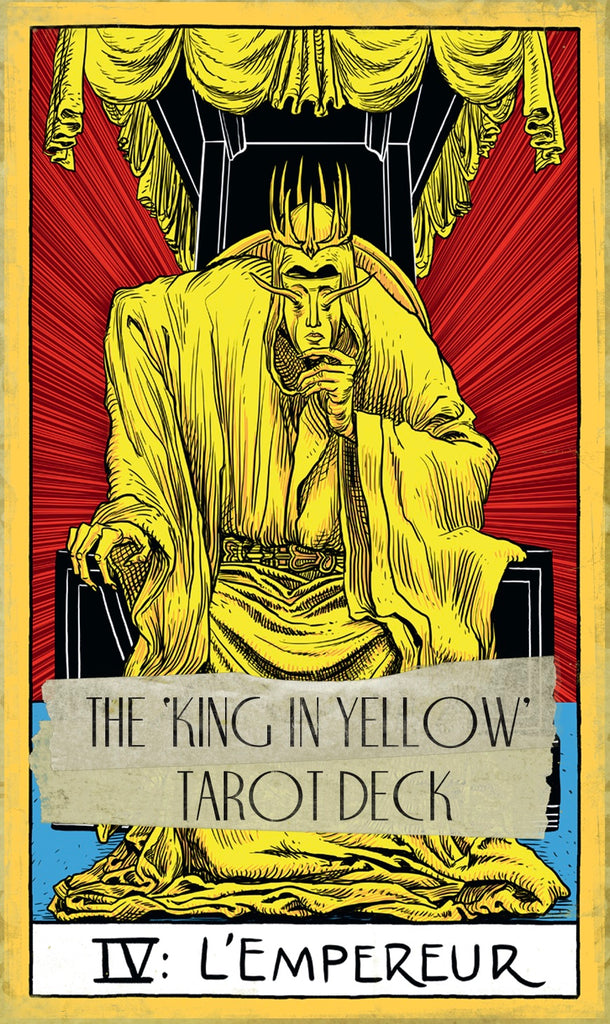By Dave Kish, ©1999
In 1915, during World War One, French intelligence officials established a paranormal research group within the Deuxieme Bureau. This group was known as the Bureau for Special Phenomena; it had a total of 15 officers and enlisted personnel and a very small budget. It was to investigate strange reports from the Allied forces that might involve paranormal activity during the war. Understaffed and with an almost nonexistent budget, the Bureau had few successes. It almost always arrived after incidents had occurred and gathered little useable intelligence. By war’s end, though, it had gained a degree of professionalism in the field and had managed a few coups that justified its existence; premiere among these was the follow-up investigation of paranormal activity and hidden horrors in the Argonne Forest concerning the US 1st Battalion, 308th Infantry (the Lost Battalion). (See Chaosium’s No Man’s Land for details.)
After the war, the DB augmented the Bureau with another dozen agents drawn from the Service de Controle et d’Assistance des Indigenes en France des Colonies (CAI), an intelligence branch operating under the Colonial Ministry. The two main focuses of both the Bureau and French intelligence as a whole was the entry of White and Red Russians into France and political turmoil (much of it Communist-inspired) simmering in the French colonies. The Bureau uncovered several small cults or covens that immigrated to France. These cults, including a small Skoptsi branch and an underground performance of The King in Yellow, were broken up by police raids as the Bureau hunted for more. The discovery of a Soviet spy, more by accident than anything else, also helped keep the organization going.
The Bureau searched the colonies for signs of paranormal activity, also. Using its CAI agents, they uncovered a tribe of Tcho-Tcho warriors in Indochina that were practicing a particularly strange brand of “witchcraft,” complete with human sacrifice. The agents led an assault on the tribe with Colonial troops, wiping out over a hundred Tcho-Tchos and recovering a few strange artifacts. Similar actions were undertaken in French North Africa, where evidence of two sinister occult groups was uncovered: the Brotherhood of the Black Pharaoh, based in nearby Egypt, and the Brotherhood of the Beast, with unknown origins. The bureau managed to make a few arrests in both groups but never breached either very far. A small operation was also mounted in the mid-1930s to determine occult leanings of the rising Nazi party. Nothing of substance came from this operation.
During this period, two rival philosophies emerged within the Bureau that would continue to the present day. One group decided that most of the occult phenomena were really in three distinct classes and categorized each event as such. The three classes were crpytozoolical, which followed that an event could be traced to an aberrant in nature; extradimensional, which were “flowover” from possible parallel dimensions; and interstellar, which were possible intrusions from beings outside Earth.
The other group saw all these events as connected and part of a larger conspiracy of sorts. They believed, though, that the primary force behind this was that ancient force that was known as Satan, and that its influence was everywhere. These two groups, who became dubbed the “Faithless” and “Faithful” within the Bureau, both had keys to the true puzzle; but each was wrapped up too much in their own beliefs to connect the dots to the true forces at work.
World War Two erupted, and within a year France was a conquered and partitioned nation. Some members of the Bureau fled to England to serve with the Free French forces. The rest of the Bureau continued operating out of Vichy France. Those that remained in Vichy found all of their past work looted by the German S.S. The S.S. directed all future projects and the reports were funneled directly to Germany. While technically subordinate to Service de Reseignements (SR–Information Service), a semi-independent branch of the DB, all orders came from Berlin. The Bureau conducted little of importance during this time.
Those that fled to Britain approached Brigadier General de Gaulle to set up a similar organization to the Bureau within his intelligence organization, the Bureau Central de Renseignements et d’Action (the Central Bureau of Information and Action–BCRA). The General was unimpressed by the Bureau representatives, but he allowed them a small office and budget. The new Bureau took the name of the Office of Special Scientific Intelligence and went to work to reorganize its organization and operations. Until late 1942, however, little more than a trickle of intel and few operations were undertaken.
Late 1942 brought the Americans and their OSS into the picture. Several members of the Office were assigned as liaisons with a branch of the OSS known as P Division. The officers assigned were given very little information from their American allies but their questions told much of what they were undertaking. Some important documents crossed their desks and added a little to the knowledge of the French. References to things such as “Dagon” helped to strengthen the belief of the “Faithful” that the Americans were aware of the vast satanic conspiracy. Scientific papers similarly strengthened the “Faithless” in their beliefs. Not enough was shared or observed to begin giving the big picture of what was really going on.
The members of the Office approached de Gaulle again with the knowledge of American operations they had gathered. This increased interest in the General. He increased the manpower and budget and began authorizing more operations. A side endeavor was to find out what the Americans knew and why the Germans were looting occult or ancient sites in France. The Office began running a more serious participation in the war. Intelligence began growing as it was gathered by means fair and foul from both the enemy and their allies. Operations began in North Africa, the Middle East and Europe where the Office found itself drawn into a strange occult war being raged in the shadows. Meanwhile, when the Germans occupied Vichy, the Bureau was shut down and all files seized. Most of the organization disappeared in the night, never to be seen again.
De Gaulle used the BCRA as not only a war-fighting tool but also a post-war political one, and a variety of operations were undertaken to pave the way for France’s reemergence after the war. The Office took advantage of these to search the population for those who could help its efforts and for potential enemies. The BCRA amassed files on over 100,000 French citizens during the war to determine their political reliability. The Office used these files to establish a larger net of contacts and to eliminate both potential cultists and political enemies.
The BCRA merged with several other French intelligence organizations following the liberation of North Africa. The SR and Military Security Service that formerly operated in Vichy were absorbed by the BCRA and the name of the organization changed to Direction Generale des Services Speciaux (DGSS–General Directorate of Special Services). In a historic change of policy, the DGSS reported to de Gaulle personally and not to the military leadership. This allowed the Office even more autonomy and manpower for its operations.
After D-Day, the DGSS began operating throughout Middle East and Eastern Europe, in addition to France. The DGSS also ran agents in North America to determine policies that would affect France coming out of there. The Office used these operations to explore some American sites of interest. Intelligence gathering operations throughout New England, including Innsmouth, turned up some interesting speculation and rumors but little hard evidence.
After the liberation of Paris, the DGSS underwent another names change to the Direction Generale des Etudes et Recherches (DGER–General Directorate of Studies and Research) and their mission was changed again. In addition to their wartime duties, the DGER began operations aimed at the French population. Intelligence was gathered on political parties and resistance groups, phones tapped, mail read, blackmailed officials and surveillance conducted. The office used these activities to strengthen its own position and uncover occult activity in France. Little was to be found, however, as the Germans had been thorough in their looting. Some events were uncovered, though, including a Paris occult underground group, a ghoul coven in Normandy and a few other groups that had escaped German detection or had allied with them. Several German caches of art and loot also turned up artifacts of interest to the Office.
As the war wound down, the French were racing against their allies and the retreating Germans to regain old occult loot and recapture new ones. They were generally too late, though. A small fraction was gained but nothing to even equal the losses suffered. This further biased the attitude of the Office and obscured the bigger picture.
In 1946, the DGER was abolished. with de Gaulle stepping down as acting-president. The Service de Documentation et de Contreespionnage (SDECE–External Documentation and Counterespionage Service) was formed in its place, and the Office was reassigned there. Political upheaval followed the resignation of de Gaulle and the office fully exploited it. The SDECE and the Office were hampered by not being allowed to operate counterespionage activities within France proper and its lack of arrest powers. Instead, they concentrated on France’s overseas colonies. It had agents enter Indochina with the French troops and SR agents that occupied Haiphong and Hanoi to oppose Ho Chi Mihn. The Office began conducting renewed operations against Tcho-Tcho tribes with assistance from the Nationalist Chinese Central Bureau of Investigation and Statistics (which had fought its own occult war during the war against Tcho-Tcho guerrillas, Japanese secret societies and a legendary cult of immortal wizards). The guerrilla war between these two factions was exceptionally brutal. The SDECE, DB and military intelligence joined the fray and the Office began drawing upon them as well. Both sides experienced torture, rape, murder and worse fates. With the defeat at Dien Bien Phu ending French involvement in Indochina, the Office was pulled out without completing their mission. Several agents stayed behind to wage their own private war against the Tcho-Tcho. Sporadic reports filtered out from this group for about a year, then they mysteriously stopped. The agents were never heard from again.
Algeria exploded into revolt in 1954 by the Front de Liberation Nationale (FLN). Caught by surprise, the intelligence agencies and military raced to catch up in this guerrilla war. The Office uncovered evidence that the Brotherhood of the Beast was aiding the FLN. Some recovered documents hinted that the Brotherhood was also engaged in some plot that seemed to point towards the return of the “antichrist.” The Office took these threats very seriously. As brutality mounted in the war, the Office was also routinely kidnapping, torturing and murdering those it felt were connected to the Brotherhood. Organized crime elements were tapped to provide additional resources and mercenaries hired to add additional combat strength. Clashes with the old masters of the Office, the DB, were frequent.
In 1958, members of the military and intelligence agencies attempted a coup against France in Algeria, forming the Organisation Armee Secrete (OAS). This led to de Gaulle being returned to power by parliament and given total power to rule by decree for 6 months. The SDECE benefited from this by gaining huge amounts of power. In a great irony of the war, the SDECE established a terrorist organization that was filled with hired assassins. This organization, known as the Red Hand, assassinated Algerian politicians, smugglers, intellectuals, French citizens who were in support of the nationalists in Algeria, leaders and members of African resistance groups and so on. What was not known to either SDECE or the Office, was that the bulk of these operatives were Brotherhood agents who had been given a license to kill by the government. While some agents actively sought out the Brotherhood, it was right in their midst and supported by the same organization. In 1961, however, several operatives of the Office discovered the link. De Gaulle was informed and the headquarters of the group was blown up. All the while, the Algerian conflict spread through the shadows of Europe and Africa. These actions and reputation followed the group even after the end of the Algerian War in 1962.
With the rise of liberalism in the late 60s, the Office came across another group of cultists. In the growing nature and environmental groups was found to be a sub-sect that was devoted to something known as the Black Goat. The “Faithful” of the Office saw another manifestation of the worldwide satanic cult here and began quiet operations to disrupt their operations. About the same time, an Office researcher was studying nuclear blasts and their dynamics. It appeared that there was for a microsecond at the time of explosion, in which a dimensional rip formed. It closed very quickly, but it was possibly a gateway to another dimension if it could be somehow harnessed or duplicated. As environmental groups began fighting against nuclear testing, the “Faithful” of the Office came to the conclusion that the rip was actually a portal to Hell that could be used to battle Satan. That explained why the environmentalists didn’t want to see further testing. They now felt they had a moral justification to the world to both study this rip further and shut down the environmentalists.
CIA cooperation increased during this time frame. Operations throughout Africa brought closer ties and more exposure to the unknown. A few low-level leaks at the time hinted that the Americans might have had some form of contact with an alien intelligence, possibly even access one way or another to its technology. There was nothing concrete but a few rumors and speculations. Still, as a form of silent revenge, intelligence on the Tcho-Tchos was withheld from the CIA operating in Vietnam.
In spite of efforts to clean up the SDECE throughout the 1970s, actions continued apace. In 1981, a schism developed between the SDECE and newly-elected President Francois Mitterand. Among other incidents, the Office attempted to hide its projects from the new President. The head of the SDECE was replaced and the schism grew worse, until the agency was changed yet again to the Direction Generale de la Securite Exterieure (DGSE–General Directorate for External Security).
The DGSE’s first chief was a former head of both Air France and an aerospace company. He forced the Office to open up its records and began to follow the intelligence concerning American-Extraterrestrial connections. Members of the staff were put permanently on this line of inquiry. Even after he resigned a year and a half later, this policy continued.
The Office also kept up its war against the environmental groups, which culminated in the sinking of Greenpeace’s Rainbow Warrior in 1985. No connection was ever established between the occult and Greenpeace, but the operation went forward anyway. After the incident became public, DGSE took the heat in the open and the Office in secret. The Office was completely reorganized and cleaned up after the incident.
The reorganization of the Office took it out of the hands of the DGSE and placed it under a committee. The heads of all the national police forces and intelligence organizations, along with the President, oversee all its actions directly. It no longer can set its own policies. Each organization will contribute a number of personnel, money and resources to the running of the Office. It is now a secret but independent organization and follows the whims of its masters’ policies. In some ways it is more efficient than before, in others more restricted.
Its duties now include the old investigation of occult groups and phenomenon that could impact the interests of France. They also focus on American interests in UFOs and Soviet/Russian interests in psychic abilities. More emphasis is placed on industrial espionage, in the hopes of uncovering connections between the US government and alien technology. An American company, NWI, has drawn some recent attention through this avenue. The old guard that remains still attempts to run its own operations in traditional areas but has been reined in somewhat.
The Office now has about 400 members, divided into four departments. The Research Department handles raw intelligence and scientific knowledge. The Intelligence Department gathers intelligence. The Support Department manages logistical functions for the Office. The Action Department carries out special operations in support of the Office. The Office is still divided by those who believe in strictly scientific answers and those who see themselves involved in an ages old occult conspiracy. Neither side has managed to gain control of the organization. Operations continue today in this fashion worldwide.
Another interesting facet of the Office’s new policies is that certain occult and UFO groups in France are infiltrated, not for destruction but to provide access to knowledge that would be hard to find any other way. Conspiracy theory, UFO lore and the like are now gathered and processed through the Office’s Research Department to further their knowledge. As the organization plays catch-up from years of lost intelligence, blinding bias and secret agendas, it is attempting to arrive at the place its (unknown to them) counterparts from other countries have already reached. If it succeeds remains to be seen.





